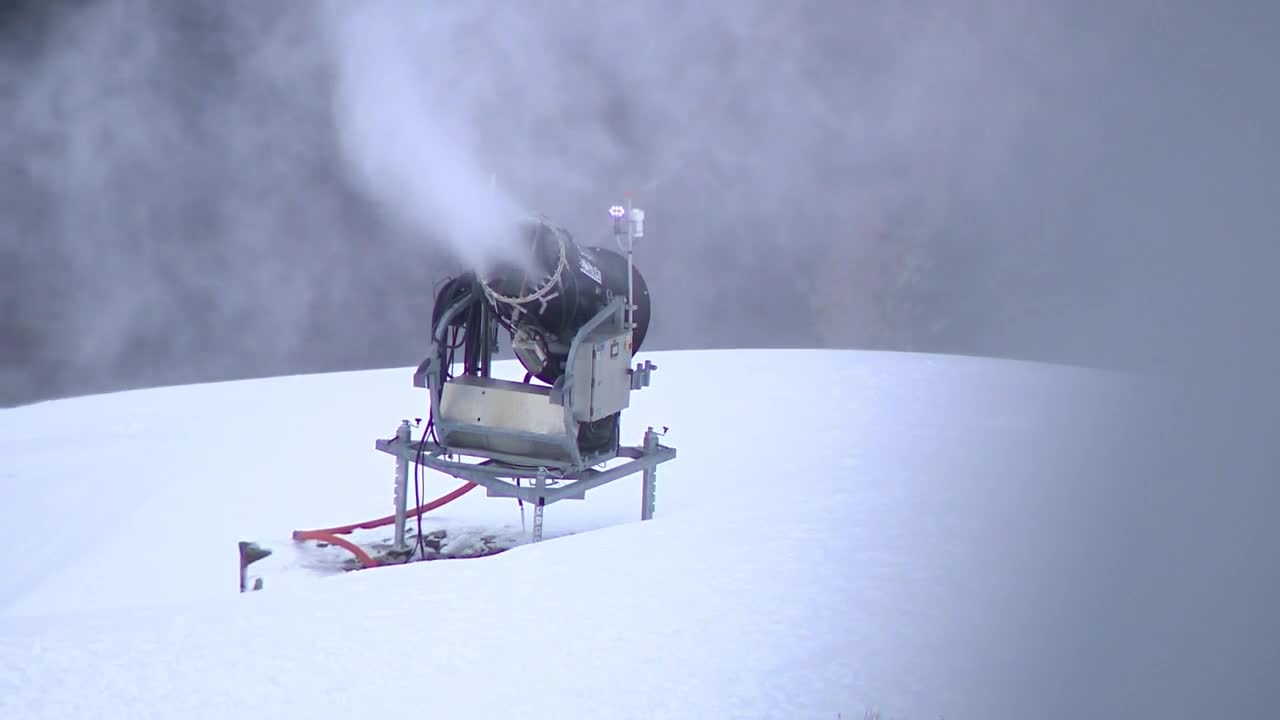LITTLE COTTONWOOD CANYON, Utah — It’s been a slow start to Utah’s ski season, with warm, dry weather forcing resorts across northern Utah to delay their opening dates. But colder air has finally settled into the mountains — and that means the snow guns are back to work.
Up at Snowbird, crews have jumped at the first real stretch of snowmaking weather. And while it might seem like they just flip a switch once temperatures hit freezing, there’s a lot more science behind those man-made flakes.
Snowmaking depends on a mix of temperature and humidity, something the industry calls the wet-bulb temperature. The drier the air is, the more quickly water droplets can cool and freeze as they’re blasted out of a snow gun.
Snowbird’s Mountain Operations Manager, Jacob Marquardt, says the best snowmaking happens between about 14 and 28 degrees Fahrenheit. At the lower end of that range, the internal parts of the snow guns — the ports and nucleators that help crystallize water droplets — can actually freeze up. Once temperatures start climbing above the upper 20s, the guns can’t draw in water as efficiently, and the quality of the snow drops off.
Park City businesses feeling the pain of snowless start to season:
Snowbird has a full fleet of equipment to take advantage of the ideal windows.
Marquardt says the resort runs about 100 snow guns across the mountain. Roughly half are fixed in place — tall, tower-style machines — while the others are mobile units that can be moved wherever early-season coverage is needed.
Technology has come a long way in recent years. Newer guns can pump out around 160 gallons of water per minute and turn it into snow, while older models simply can’t match that output.
Despite the sluggish start to the season, Snowbird isn’t discouraged. Marquardt says it doesn’t take much for Utah’s mountains to catch up. A couple of well-timed storms and a good run of cold nights can change things quickly.
“With the standards and safety people expect here at Snowbird, we’ll open as soon as conditions allow,” he said. “It’s been a slow start, but it only takes one or two storms to get right back on track.”
For now, snowmakers are doing their part to give winter a push — and with colder temperatures finally settling in, the season may be turning a corner.




